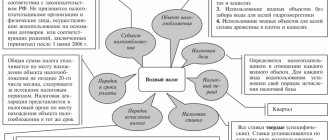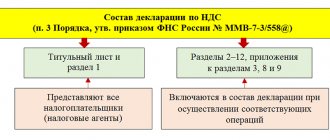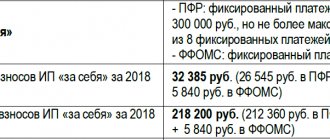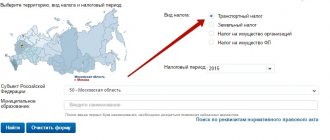According to paragraph 3 of Art. 164 of the Tax Code of the Russian Federation, from January 1, 2021, VAT payers are required to apply a rate of 20%. This applies to all goods shipped since the beginning of the year. The increase in the VAT rate from January 1, 2021 does not depend on when and under what conditions the contracts were concluded. So, if you make a shipment in 2021, but received an advance payment in 2021 (and therefore calculated VAT at a rate of 18/118%), then the buyer must still present VAT at a rate of 20%. The advance date does not affect this.
You definitely need to prepare your cash register for the transition to 20% VAT. How to do this - read here. The online cash register receipt must indicate the new tax rate, as well as the name of the product. This means that you will need a cash register program that can do this. The Cashier MySklad application supports this and all other requirements of 54-FZ. Everything is already ready and tested: there is no need to configure anything specially. and try the application right now. It's free.
The most difficult issue in the situation of switching to a 20 percent VAT is transitional contracts, that is, transactions that were concluded in 2018, but will only be executed in 2021. Let’s look at how to take VAT into account in documents if payment and shipment occur in different years.
If the shipment was in 2021, and payment will be in 2021
This is a completely common situation that will not cause any difficulties. The tax base is determined in 2021. The seller pays the tax, and the buyer takes it as a deduction at a rate of 18 percent. After the transition to 20% VAT in 2021, there will be no problems under such supply contracts: at the time of payment, the tax base will not need to be recalculated, and the increase in the rate will not change the tax obligations of the seller and buyer.
Difficulty can only arise if in 2021 you do not ship all the goods under the contract. Then VAT will need to be charged separately for each shipment on the cost of the goods actually shipped. For those goods shipped after January 1, 2021, a VAT rate of 20 percent will apply.
It is more profitable for the seller to ship the goods before the new year. Whether the buyer pays this year or next, the seller will benefit from the lower tax rate.
What is VAT refund in 2019-2020
Every VAT taxpayer has the right to take advantage of deductions.
You can get acquainted with the specifics of using deductions in the article “What are VAT tax deductions?” .
In tax periods, when the amount of deductions exceeds the amount of VAT payable, companies and individual entrepreneurs can reimburse the tax from the budget. Art. 176 and 176.1 of the Tax Code of the Russian Federation provide for a tax refund algorithm. However, the reimbursement process does not always go smoothly.
Situations when a VAT refund may be refused are discussed in the article “ What are the grounds for refusing a VAT refund?” .
If the payment was in 2021, and the shipment will be in 2021
In the case of prepayment, the calculation of tax during the transition period for VAT from 18 to 20% depends on whether the price is indicated in the contract with or without tax.
If you entered into a contract in 2021 and indicated a price in it taking into account a rate of 18%, but the shipment will be in 2021, you will have to pay VAT at a rate of 20%.
If the price is given without VAT, add it on top additionally. This is more profitable for the seller, since the tax will be increased at the expense of the buyer.
What if the contract does not directly indicate that VAT is not included in the price? Check the terms of the contract and the circumstances of its conclusion, including related correspondence. If it does not follow from all this that VAT is not included in the price specified in the contract, this will mean the opposite: it is included in this price. In this case, you will have to calculate the tax using the estimated method. This is an unfavorable situation for the seller: if the rate increases, the cost of goods will decrease, and it turns out that VAT increases at the expense of the supplier.
How is VAT calculated?
VAT on the amount at a rate of 20% is calculated using the formula:
VAT = amount_without_VAT × 20 / 100
or using a simpler formula:
VAT = amount_without_VAT * 0.2
If you need to allocate VAT 20% from the amount that already contains VAT is determined using the expression:
VAT = amount_with_VAT / 1.20 × 0.20
What transactions are not subject to VAT?
The list of transactions not subject to value added tax includes:
- relations arising from real estate lease agreements with foreign citizens or non-resident companies officially operating on the territory of the Russian Federation;
- sale of prosthetic and orthopedic equipment, as well as raw materials and components for its production;
- sale of equipment and transport designed for the movement, rehabilitation and socialization of disabled people;
- production and sale of glasses, lenses for vision correction and related frames;
- provision of compulsory health insurance services;
- provision of paid medical care related to the detection and treatment of diseases, including services for collecting donor blood, caring for bedridden patients, pregnancy management, etc.;
- services of teachers and nannies of kindergartens, as well as teachers of clubs and sections of out-of-school education.
An exhaustive list of transactions exempt from value added tax is specified in Art. 149 of the Tax Code of the Russian Federation.
Important features of VAT calculation
When determining the amount of VAT to be paid, the entity must take into account some important points. In particular, if the object of taxation is goods imported from abroad and paid for in foreign currency, their value is recalculated into rubles at the rate of the Central Bank of the Russian Federation. Moreover, the exchange rate is taken into account at the time of filing the declaration.
When calculating VAT on other categories of goods and services, the prices indicated in the invoices are taken as calculation data. As for declarations for this tax, they are submitted electronically using specialized computer programs.
Read also: Daily allowance for a business trip in 2021
VAT calculation methods
Tax legislation offers three methods for calculating VAT:
- addition - VAT is defined as the product of the tax rate, the salary of one employee, “net” income and interest on each category of goods. This method has a noticeable drawback, namely the impossibility of total control over the calculation and payment of tax. Because of this, addition is rarely used as a primary method;
- deduction - the amount of tax payable is calculated as the product of the rate by the difference between revenue and the cost of goods sold. This method is more often used in enterprises because it allows the use of counter-checks to control tax payment.
- invoice method – considered the main method of calculating VAT. When using it, VAT is reflected in the invoice as the product of the commodity value and the tax rate. The seller provides the invoice to the buyer, and keeps one copy of it. The VAT payable is determined as the difference in taxes indicated on the invoices of the seller and the buyer.
If the shipment was in 2021, and a return is made in 2021
If the buyer returns an item, it is the seller who issues the adjustment invoice for the return. The document must indicate the rate not 20%, but 18%. And in the adjustment lines, the seller indicates those goods that the buyer wants to return.
Example:
In December 2021, the company sold goods worth 120,000 rubles to the buyer, including 18,000 rubles of VAT. But in January 2019, the buyer decided to return part of the purchases in the amount of 60,000 rubles.
The selling company must issue an invoice for 60,000 rubles. The accountant must indicate the VAT rate of 18% there, because the goods were sold in 2021 at the old rate.
1.4. Application of the VAT tax rate when returning goods from 01/01/2019.
Application of VAT by the seller
In accordance with paragraph 5 of Article 171 of the Code, tax amounts presented by the seller to the buyer and paid by the seller to the budget when selling goods are subject to deductions in the event of the return of these goods (including during the warranty period) to the seller or refusal of them.
According to paragraph 4 of Article 172 of the Code, deductions of the specified tax amounts are made in full after the corresponding adjustment operations in connection with the return of goods or refusal of goods are reflected in the accounting records, but no later than one year from the date of return or refusal.
Based on the provisions of paragraph 13 of Article 171 and paragraph 10 of Article 172 of the Code, when the cost of shipped goods changes downwards, including in the case of a decrease in the number of goods shipped, the basis for deducting VAT from the seller is the adjustment invoice issued by the seller.
In connection with the above, when returning from 01/01/2019 the entire batch (or part) of goods, both accepted and not accepted by buyers, it is recommended that the seller issue adjustment invoices for the cost of goods returned by the buyer, regardless of the period of shipment of the goods, that is, until 01/01/2019 or from the specified date.
Moreover, if in column 7 of the invoice for which the adjustment invoice was drawn up, a tax rate of 18 percent is indicated, then in column 7 of the adjustment invoice the tax rate of 18 percent is also indicated.
When returning from 01.01.2019 goods paid for by persons who are not VAT taxpayers and (or) taxpayers exempt from fulfilling taxpayer obligations related to the calculation and payment of tax, to whom invoices are not issued, and shipped (transferred) to the specified persons before 01/01/2019, an adjustment document is registered in the purchase book containing summary (consolidated) data on return transactions made during the calendar month (quarter), regardless of the readings of cash register equipment.
Application of VAT by the buyer
By virtue of paragraph 1 of Article 172 of the Code, deductions of VAT amounts presented by the seller to the buyer when he purchases goods are made on the basis of invoices issued by sellers upon shipment of these goods, after accepting these goods for registration and in the presence of relevant primary documents.
According to subparagraph 4 of paragraph 3 of Article 170 of the Code, tax amounts accepted for deduction by the taxpayer on goods (work, services), including fixed assets and intangible assets, property rights in the manner prescribed by Chapter 21 of the Code, are subject to restoration by the taxpayer in the event of a change in value of shipped goods (work, services), transferred property rights in a downward direction, including in the case of a decrease in price (tariff) and (or) a decrease in the quantity (volume) of shipped goods (work, services), transferred property rights.
Taking into account the above, if the buyer has accepted for deduction the amounts of tax presented to him for the goods he accepted for registration, then the restoration of the VAT amounts in accordance with subparagraph 4 of paragraph 3 of Article 170 of the Code is carried out by the buyer on the basis of an adjustment invoice received from the seller, regardless of the period shipment of goods, that is, until 01/01/2019 or from the specified date.
How to take into account the increase in the VAT rate from 18 to 20% in the contract?
Obviously, you can prepare for such a situation during the remaining period of 2021, when you will enter into contracts whose obligations you intend to fulfill after January 1. A safe and profitable option that will protect you from losses is not to indicate the VAT rate. Since it is increasing on the basis of a law that will come into force only on January 1 next year, when concluding an agreement this year there is no formal reason to indicate a rate of 20%. You can specify in the contract the procedure for forming the final price, that is, the cost of goods excluding VAT + an indication that VAT will be charged additionally at the rate established by clause 3 of Art. 164 Tax Code of the Russian Federation. This will mean that until December 31 the VAT rate will be 18%, and from January 1 - 20%.
Is it possible to make changes to the contract for 2019, which has already been concluded, if the VAT rate increases? First of all, agree on the terms with your partner. Then draw up an additional agreement with changes to the VAT rate in 2021. The same principle applies here as with contracts. When concluding an additional agreement in 2021, it is better not to indicate a specific VAT rate, but simply refer to the one established by the Tax Code.
When drawing up an additional agreement to the agreement on changing VAT from 2021, you can include other conditions in it. This will help avoid losses. So, you can agree and indicate early delivery (without specifying a reason) - until the VAT rate changes in 2019. This will be beneficial for you because you will be able to apply the 18% rate. Also, to soften the transition to 20% VAT for your regular customer, you can offer him a discount on shipment.
Who is included in the VAT payers?
At first glance it seems that the subject, i.e. The VAT payer is the party selling the product or service. From a legal point of view this is true, but in fact the buyer pays the tax. To understand why this happens, you should consider the algorithm for its formation in practice.
So, for example, a certain enterprise purchases raw materials from a counterparty for its own production. After settlement with the supplier, the company determines the cost of the future product, including VAT. However, at this stage it is not accrued, but is only included in the “tax credit” category.
After the product has been manufactured, its selling price is assigned, which includes production costs, excise taxes, a markup constituting “net” profit, as well as VAT. Thus, the tax is included in the sales price that the buyer ultimately pays.
After selling a batch of goods, the company determines the amount of “net” profit, *20% of which will be value added tax.
*20% — VAT
Thus, the category of VAT payers includes:
- legal entities and individual entrepreneurs engaged in the paid sale of goods, works or services;
- companies and individuals bringing goods to Russia by crossing the customs borders of the state.
Objects of taxation
Based on Article 146 of the Tax Code of the Russian Federation, the following items are subject to VAT:
- provision of services;
- manufacturing jobs;
- sale of goods;
- import of movable objects.
The main condition under which a business transaction is subject to VAT is its sale on the territory of the Russian Federation.
VAT rates and calculation
Despite the fact that calculating this tax is quite difficult, subjects do it on their own. The calculation is made in the following order:
- the amount of mandatory collection is determined for all transactions carried out in the reporting period;
- the amount of deduction for each operation is determined;
- The amount to be paid to the budget is calculated.
Read also: Is personal income tax withheld from sick leave or not?
As for rates, today entities pay VAT in the amount of:
- 10%;
- 20% (18% until 2021);
- 0%.
A rate of 10% is applied when selling:
- agricultural products;
- fish and other marine products;
- some products for children;
- medicines, medical equipment and equipment;
- printing products.
The zero rate “works” in relation to:
- some types of transport operations, including international transport;
- works and services for organizing and holding sporting events;
- imported goods;
- forwarding activities;
- mining of precious and rare earth metals;
- work related to servicing the foreign diplomatic corps;
- export sales of fuels and lubricants.
In all other situations, the standard rate applies - 20% (18% until 2021).
How to prepare cash registers for the application of the new VAT rate from January 1, 2019
The new VAT rate of 20 percent must be indicated on cash receipts starting January 1, 2021. The Federal Tax Service intends to treat violations strictly. Therefore, cash register equipment must be brought into compliance with this requirement as soon as possible. What you need to do - read our article >>
Sources:
- Letter of the Federal Tax Service of Russia dated October 23, 2018 No. SD-4-3/ [email protected]
- Letter of the Federal Tax Service of Russia dated September 10, 2018 No. SD-4-3/17537
- Letters of the Ministry of Finance of Russia dated 08/06/2018 N 03-07-05/55290, dated 08/28/2018 No. 24-03-07/61247, dated 09/18/2018 No. 03-07-11/66752, dated 04/07/2015 No. 03-07 -09/19392
- Art. 154, 164, 167, 168, 170, 171, 172 of the Tax Code of the Russian Federation
- Art. 452 of the Civil Code of the Russian Federation
- Federal Law of August 3, 2018 No. 303-FZ
- Resolution of the Plenum of the Supreme Arbitration Court of the Russian Federation dated May 30, 2014 No. 33 (clause 17)
When is VAT payment due and what is the deadline for filing the declaration?
The deadlines for paying VAT, as well as submitting a tax return, are regulated by Art. 174 Tax Code of the Russian Federation. Tax payment is made every month in equal payments, calculated taking into account the resulting amount of tax payable for the previous tax period; The declaration is submitted once a quarter.
What is the tax period for VAT is described in this article.
Since 2015, the VAT return is submitted by the 25th day of the month following the quarter, and payment is made by the 25th day of each month. Such deadlines were introduced by the Law “On Amendments to Parts One and Two of the Tax Code of the Russian Federation” dated November 29, 2014 No. 382-FZ.
Read about VAT payment deadlines here.
New VAT rate in 2021: changes to contracts and registration of additional fees. agreements
If the primary contract contains the wording “The range and price of each delivery is determined by the specifications that are an integral part of this agreement,” then you will not have any problems when working during the period of tax changes.
Also, nothing will change for companies selling products at preferential rates (0% and 10%). But in other cases certain questions arise.
When the parties signed an agreement for the provision of services, their total cost was determined taking into account the rate of 18%. The work is carried out over two (2018-2019) or more years, and one of the following payment options is used: 100% prepayment or money transfer upon completion of the work. When and who pays the increased fee?
When providing services, as well as when shipping products, the tax base is determined twice:
- when transferring funds as an advance payment;
- at the time of performance of work or delivery of goods.
If services/goods were fully paid for back in 2021, then the contractor will have to transfer 18% of the entire amount to the state. treasury After the actual fulfillment of contractual obligations, the tax fee will have to be recalculated and the amount received for a specific period will be used for calculations.
Already from the beginning of 2021, entrepreneurs need to apply the value of 20%, so if the prices remain the same, the monthly profit will be reduced by 2%.
If funds are credited to the account after the transfer of products or provision of services, then also from January 1, 2021, the contractor’s profit decreases by 2%.
- Equipment setup
1 000 ₽
1000
https://online-kassa.ru/kupit/nastrojka-oborudovaniya/
OrderMore detailsIn stock
- Firmware VAT 20% Mercury 185F
1 000 ₽
1000
https://online-kassa.ru/kupit/proshivka-nds-20-merkurij-185f/
OrderMore detailsIn stock
- Firmware VAT 20% Elwes MF
1 000 ₽
1000
https://online-kassa.ru/kupit/proshivka-nds-20-elves-mf/
OrderMore detailsIn stock
Without signing an amended contract or drawing up additional agreements, costs associated with an increase in tax become a problem for those selling products or providing services.
But based on Article 450 of the Civil Code of the Russian Federation, the parties have the right to adjust previously adopted agreements and choose more profitable options for cooperation:
- conclude additional an agreement to change VAT by 20% from 01/01/19, you can also cancel the previous document and draw up a new one taking into account the changed tax;
- change the timing of delivery or work and fulfill all obligations under the contract in 2021;
- make additional agreement to increase the cost of products or work by 2%.
All of these options will allow suppliers or performers to cover upcoming costs.
Flashing cash registers for VAT 20% and FFD 1.05 remotely. Without stopping trading!
Leave a request and receive a consultation within 5 minutes.
In 2021, the company received an advance payment, from which it transferred to the state. budget 18%. Shipment is planned only in 2021. The tax rate at this time will already be 20%. Who will bear the costs of paying the increased fee and how exactly will this operation take place?
There are no detailed explanations on this issue yet. But the Ministry of Finance recommends analyzing the terms of the agreement and studying the business correspondence preceding its conclusion. If it is not indicated anywhere that the contract price is calculated without taking into account value added tax, then the amount of the surcharge is determined by calculation, and the difference is compensated at the expense of the supplier.
If the agreed price was calculated without taking into account the surcharge, for example, 500 thousand rubles, and the invoice was issued for the amount of 590 thousand rubles, then in 2021 you will have to approve a new twenty percent tax on this amount and re-submit the invoice already by 708 thousand rubles.
The buyer will have to recover 90 thousand rubles from the advance payment. and deduct 118 thousand rubles.
The total cost under the contract will increase by the amount of the additional fee, and all costs will be borne by the buyer.







